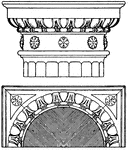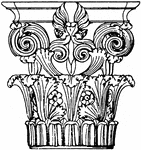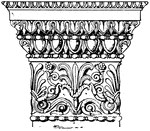Clipart tagged: ‘Abacus’

Abacus
An abacus is denoted primarily a square tablet of any description, and was hence employed in the following…

Abacus
"Abacus is a Latin term applied to an apparatus used by the Chinese for facilitating arithmetical operations,…

Abacus
An instrument for performing arithmetical calculations by means of sliding balls or counters.

Chinese Abacus
Two Chinese men use the abacus to calculate for their business. "The abacus was one of the earliest…

Byzantine Capital
The byzantine capital is found in the St. Sophia in Turkey. This design is called a Trapeziform, a byzantine…

Doric Capital
The Doric capital is an Italian Renaissance design consisting of the abacus, which is square and the…

Greek Corinthian Capital
The Greek Corinthian capital is found in a monument in Lysikrates, Athens. It is a design of spiral…

Late Gothic Capital
The late Gothic capital has an abacus that is octagonal with projected leaves. This capital has an appearance…

Late Gothic Capital
The late Gothic capital has an abacus that is octagonal with projected leaves. This capital has an appearance…

Roman Corinthian Capital
The Roman Corinthian capital is found in the palaces of the emperors in Rome. It is a design of spiral…

Greek Doric Pilaster Capital
The Greek Doric pilaster capital is found in the ancient Greek temple of Erechtheum in Athens. It has…




